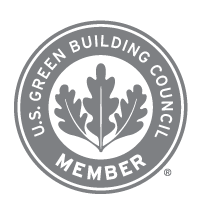Pavement Preservation = What Methods Works Best?
Category: Blog Articles By: Ken Holton, P.E.
We see and use them every day, and yet we totally underestimate their value. Most people never give them a second thought. But let them get rough or cause damage to our vehicles, and suddenly we take notice. I am of course describing our pavements…the path that runs through our communities, the ribbon that ties us together…our red carpet for getting us back home from wherever we have been.
What does it take to manage them?
Since all of us who use them daily tend to overlook the value of our roads, I guess it’s no surprise that what it takes to manage our pavements is often underestimated as well. To manage this valuable asset requires commitment and some type of plan. In many cases, software is used to help model pavement performance. This type of forecasting helps local and state agencies have the necessary funding in place to keep our roads in acceptable condition.
Everyone wants what’s “best” for our pavements, right?
Because most of us don’t consciously think about how long a pavement should last, or at what point roads start to deteriorate once we start using them, we don’t really consider their condition until we hit that darn pot hole. You know the one…where someone just threw a little asphalt in it and all seemed great until it rained.
Unfortunately, this type of “corrective” maintenance is frequently the norm: we wait until a problem occurs, and then we “fix it.” Unfortunately, by the time an issue becomes apparent on our roads, it is an indication that the pavement is already aging – regardless of its actual age. Distresses, such as cracks and roughness, are inevitable when new roads go untreated. Asphalt is an organic material that starts a natural degeneration process even before it becomes a pavement, due to the high temperatures required in the manufacturing process. The stresses of traffic and weather only accelerate the process. The best way to slow these negative effects is to develop a good preservation program.
Two approaches to solving pavement problems
The National Center for Pavement Preservation focuses on helping agencies promote the pavement preservation process through an open, educational forum. They explain that pavement preservation is intended to “extend pavement life and improve motorist safety and satisfaction while saving public tax dollars.” That’s right, preservation actually saves money.
Basically, agencies have two options when attempting to extend pavement life:
- Just keep correcting damage as it occurs, and then repave when repairs are no longer practical
- Prevent distress by applying a restorative chemistry that actually returns to the asphalt the maltene fractions that have been depleted
Correcting damage
Repairing damage is typically the easiest way to get funding. It kind of makes sense – see a problem, repair the problem. Once pavement distress becomes apparent, there is a compelling argument to perform corrective maintenance. Some of our typical corrective maintenance strategies include crack seal, slurry seal, chip seal and patching. These are all very effective tools, and when done correctly will provide useful life extension to our pavements.
Preventing damage
Preventing damage is the most sustainable type of pavement preservation. We know pavements begin to age during the production process. We can actually see the light maltene oils, which keep asphalt flexible and adhesive, escaping as a light smoke. It is not possible to completely stop this process, but early reintroduction of the maltene oils using Maltene Replacement Technology (MRT) genuinely restores the molecular structure of asphalt.
Some might even call this rejuvenation process a form of “corrective maintenance” since it does correct the damage caused during asphalt processing. Early reintroduction helps reestablish the expected adhesion and flexibility properties of the pavement. Additionally, it has been shown to defer corrective maintenance for several years.
So what works best?
For as long as I can remember, I have heard that “An ounce of prevention is worth a pound of cure.” This holds true in all areas and definitely is true when performing maintenance on a needed infrastructure. Keeping a pavement in excellent condition just makes sense. The asphalt surface intended for public use maintains its intended integrity. The people that use the roads experience less disruption. Vehicle wear and tear is reduced. The prevention approach is a win on all levels.







